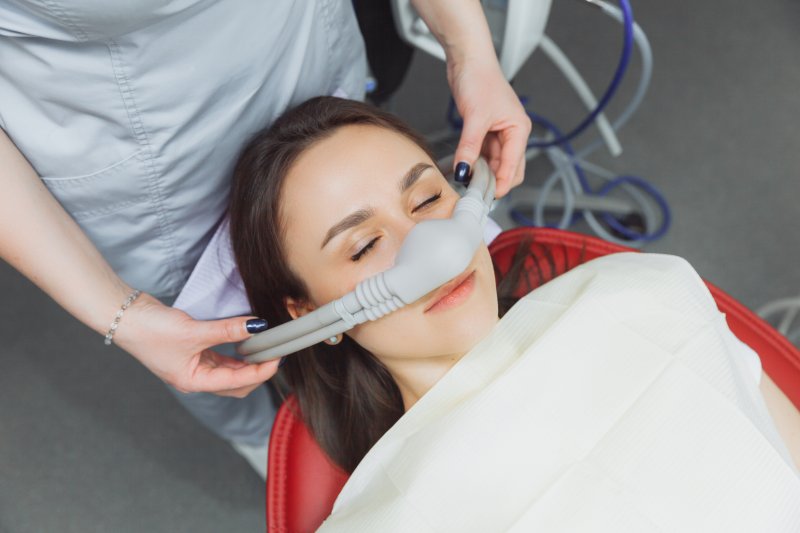Sedation Dentistry: What Does It Feel Like?
September 6, 2022

Millions of people worry about visiting the dentist’s office, often to the point that they forgo regular treatment. Unfortunately, this can spell disaster. But if you’re looking to take control of your uneasy thoughts with the help of sedation dentistry, you may wonder what it will feel like. A dentist explains what you can expect when receiving nitrous oxide, IV sedation, or general anesthesia so you feel better prepared.
Going Under: The Expectations of Sedation
The biggest question people ask when considering sedation dentistry is “Will I be asleep the entire time?” In most situations, you will not be fully sedated. Instead, you will remain cognizant enough to respond to the cues of your dental team throughout your visit.
But each method of sedation causes different effects to occur. Below is an explanation of what you can expect from each of the following:
Nitrous Oxide
Also referred to as laughing gas, nitrous oxide is the mildest form of sedation. Once the mixture is turned on, a nasal mask is placed over your nose, and you’ll begin to inhale. Within minutes, you may become slightly warm but also feel relaxed. Once the mixture is turned off and you begin to breathe regular oxygen, the effects will quickly dissipate, allowing you to resume normal activity.
IV Sedation
IV sedation is often recommended if you suffer from severe dental anxiety or are preparing for a longer appointment. This solution is administered in the dentist’s office, and members of your dental team will monitor you to ensure your safety and comfort. Using the back of your hand or the bend of your elbow, the IV will be put into place so the medication can begin to flow into your bloodstream. In just minutes, you will begin to feel almost euphoric and fully relaxed. Your nerves will be calm, allowing your dentist to perform the necessary treatment.
Because the effects do take the remainder of the day to dissipate, you must have someone escort you home after your appointment.
General Anesthesia
The only type of sedation that involves going to sleep is general anesthesia. This is commonly used for individuals who require extensive dental work. Once administered, team members remain by your side to monitor your vitals. You will not remember anything from your visit, and you’ll be required to return home and rest after your appointment.
Who is a Candidate for Sedation?
Most patients can be considered for sedation dentistry; however, you must meet with your dentist to discuss your medical history. Certain conditions may cause any one of these solutions to be less effective, such as respiratory illness or allergies to certain medications. If you are taking specific prescriptions, they can cause a potentially harmful reaction.
If you do not possess any of these issues, you’re likely to be a candidate if you suffer from:
- A sensitive gag reflex
- Traumatic dental experience
- Fear of needles
- Inability to sit still for prolonged periods
- Inability to get numb from other types of sedation/anesthesia
- Have mild, moderate, or severe dental anxiety
Sedation dentistry is a great way to take charge of your oral health and your mental mindset. Talk to your dentist about which option is right for you and start preparing for a new way of viewing the dentist’s office.
About the Author
Dr. Shandy Condie has more than 20 years of experience in the field. Earning her dental degree at the Creighton School of Dentistry, she later opened Desert Springs Dental in 2005. Understanding the dentist’s office can be a scary place for many patients, she is pleased to provide sedation dentistry to help calm nerves and improve oral health. Contact us at (480) 279-3100 if you’re looking to take better care of your smile but need help to combat your fears of dental treatment.
No Comments
No comments yet.
RSS feed for comments on this post.
Sorry, the comment form is closed at this time.







